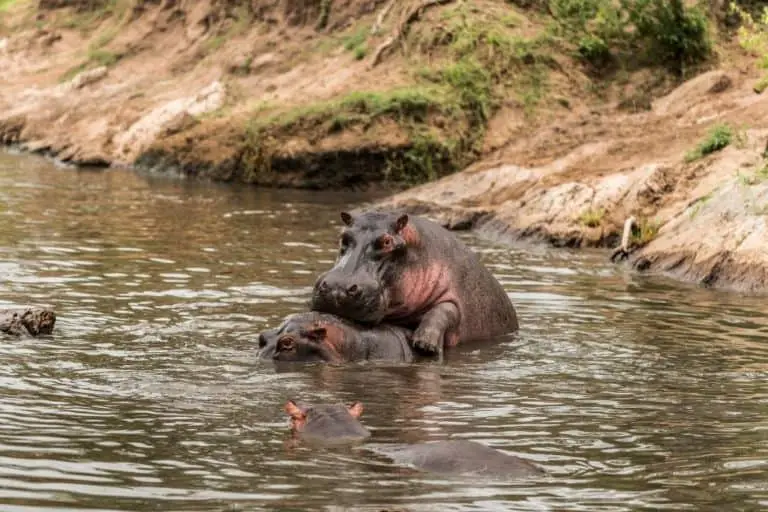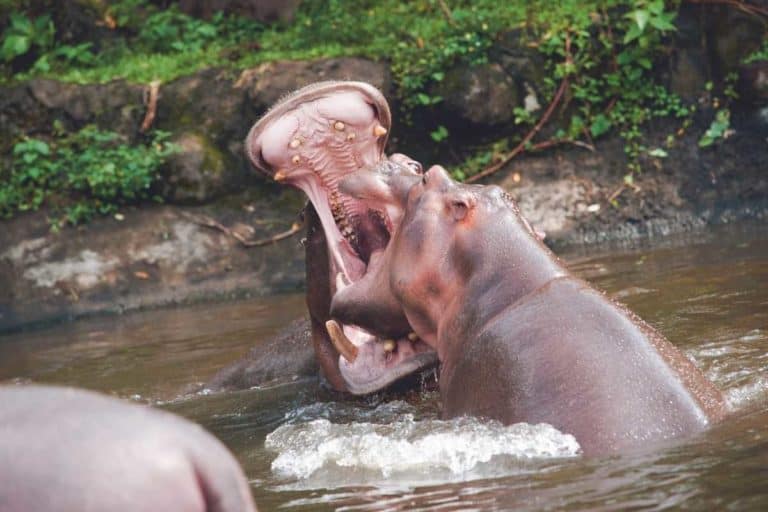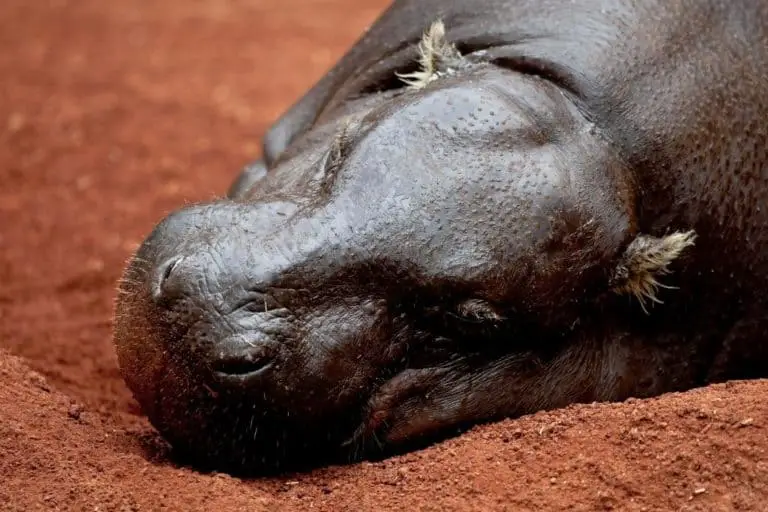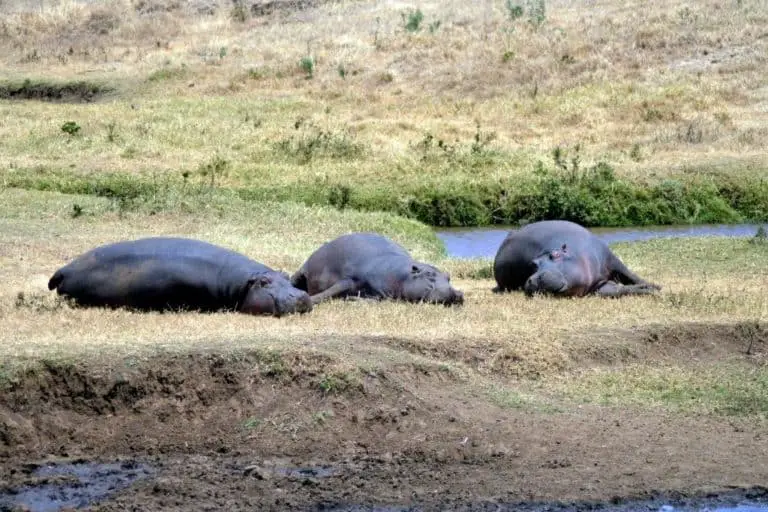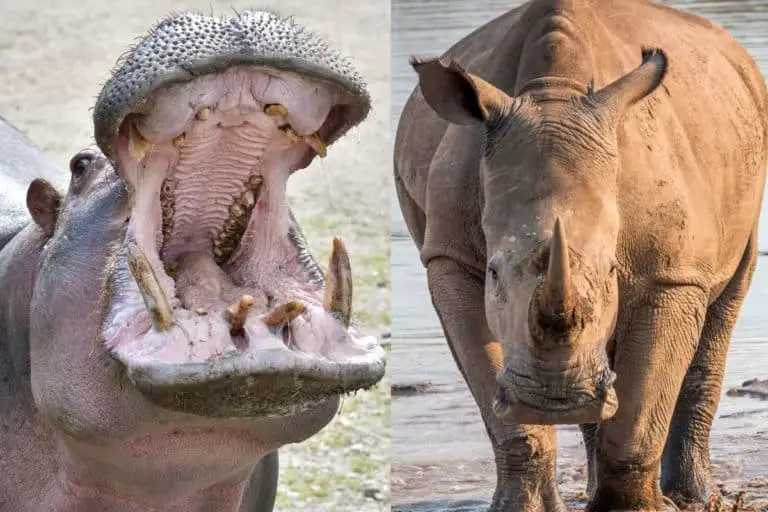How fast can Hippos Swim?
Hippos are some of the most curious creatures on Earth. Their enormous size and broad noses can be seen for miles away from water sources such as lakes or rivers.
They’re one-of-a-kind in that they don’t need to drink any other liquid besides freshwater–they get all the essential hydration while moshing around with fellow hippopotamuses!
Adult hippos swim at speeds up to 5 mph, which is just enough time for humans before we have a chance to see them resurface again. This rate changes depending on how much weight it had gained since the last feeding season when its diet mainly consisted of fresh vegetation like grasses, roots, leaves, and flowers.
- There are three main reasons for hippos moving around so much; the first is that they live in places with very little food, mainly arid grasslands and savannahs of Africa. Despite having enormous size already, hippos maintain such active lifestyles due to their ability to digest solid foods and drink water alone.
- The second reason could be due to claustrophobia, in that hippos like being in groups while bathing. Lastly, they need time for sunbathing; hippos have thick hair, which prevents their bodies from overheating during the day.
When hippos are on land, they move by hoisting themselves off the ground with their muscular hindquarters. When it’s time to go, they dive into the water to swim or take a leak and then clamber out of the river. They spend most of their time in rivers or lakes but will occasionally wade in swamps.
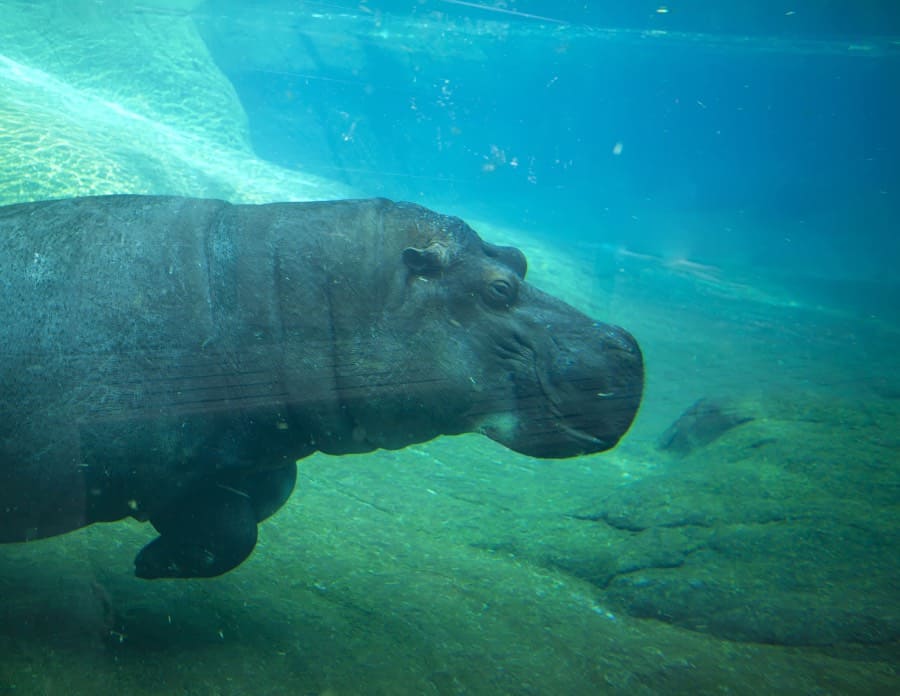
Hippos spend about half of their time in water and often travel considerable distances from one river or lake to another in search of food.
And they don’t have any problem swimming long distances across lakes and rivers. That said, hippos are not known for being particularly fast in the water.
If they need to move quickly, they use their muscular tails to propel themselves forward, and their nostrils close up so that underwater breathing is made more accessible.
When under attack, they rely on their strong jaws to defend themselves—they are equipped with impressive canine teeth that measure upwards of inches in length.
Can hippos swim long distances?
These are among the largest mammals in Africa, with adults weighing 4,000 pounds and standing nearly 6 feet tall. Hippo size does slow them down a bit when they’re in the water—and they don’t like swimming against currents or even strong headwinds. But they can maintain speeds of about 5 miles per hour, and a fast-moving hippo can easily cover 6 miles in one night.
Although they’re primarily found in lakes and rivers during the day, at night, hippos emerge onto land to graze on grasses—or simply for an evening stroll.
In the video above, you can see a hippopotamus enjoying an afternoon swim.
FAQ:
Can hippos swim faster than humans?
Hippos are enormous animals, and as such, their top swimming speed is about five meters per minute – a bit slower than an average human’s walking pace!
Do hippos have lungs?
Within the chest cavity, a pair of lungs do not function when the hippo is underwater. Their nostrils close to prevent water from entering the lungs.
Are hippos faster in water or land?
Hippos can reach about 30 mph on land, but they are not as agile as other quadrupeds such as horses and antelopes. On the other hand, hippos don’t have to deal with currents or headwinds in the water. Their top speed underwater is about four/five meters per minute (five km), similar to a human’s top swimming speed.
How do hippos swim?
Hippos are semi-aquatic mammals, so they spend much of their time in freshwater rivers and lakes. They can stay underwater for up to four hours at a time by opening only one nostril to breathe through.
Their nostrils close up when they dive underwater, which keeps the delicate skin on their faces free from silt. It is believed that hippos are not particularly fast in the water and may even migrate long distances overland to return to familiar feeding areas. To cover longer distances, they use their muscular tails as rudders to help steer in the water.
Do hippos swim or walk on the bottom?
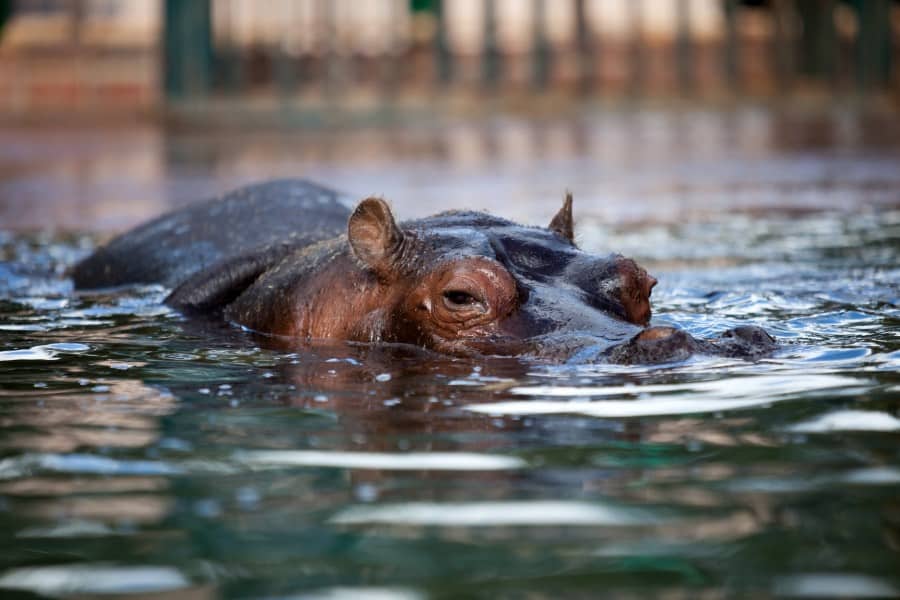
Hippos swim underwater, using their powerful tails to steer and an upward push from the fins on the tip of their muzzle to propel themselves through the water. They often walk half-submerged or even “walk” standing water with all four legs planted on the bottom when they come up for air. At night hippos may emerge onto land to graze on grass and browse.
Do hippos close their nostrils when they are underwater?
Yes. Hippopotamuses can close one nostril at a time, allowing them to breathe while remaining underwater for up to four hours. They swim by moving their head forward, using the fins at the tip of their muzzle for propulsion. The nostril is closed when submerged, the inside of the nose remains moist and free from silt and debris.
How fast can hippos swim?
A top speed of about five meters per minute has been recorded for an adult hippo in water, but this animal could not move faster without tipping forward due to its vast size.
Can a hippo drown?
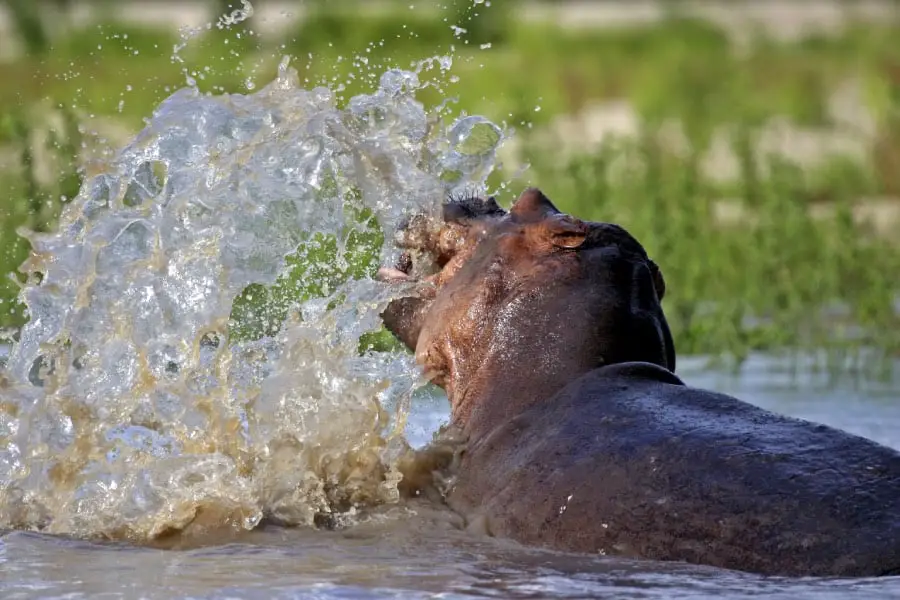
If a hippo cannot touch the bottom with its feet, it will be difficult to breathe through the nostrils and drown if it cannot reach the surface in time.
How do hippos run underwater?
Hippos are long-legged animals, and they use their hind legs as rudders in the water. The hippo’s muscular tail is used for propulsion.
How deep can a hippo swim?
Hippos spend most of their time close to the surface but have been recorded swimming at depths up to seven meters (23 feet).
